A look back over the key themes and trends to emerge from show season. All of which can help us grow in more thoughtful ways, says Dan Masoliver
1. Rethink weeds
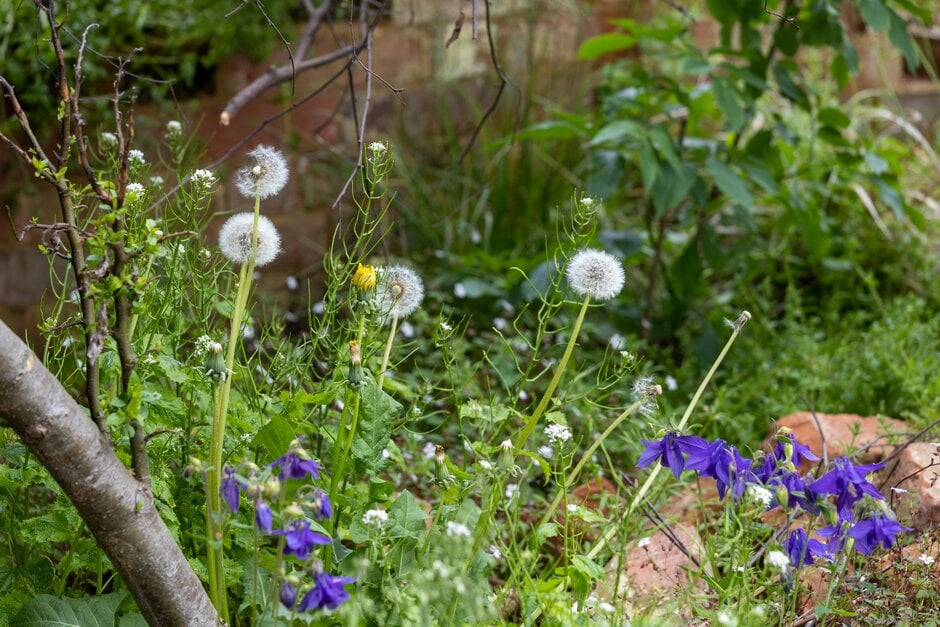
In the build-up to this year’s RHS Chelsea Flower Show, weeds monopolised the media coverage. There’s no denying that this was the weediest Chelsea on record, with several show gardens featuring dandelions (Taraxacum officinale), common knapweed (Centaurea nigra), brambles and nettles. But once the show opened, the furore died down because what became clear from these looser, informal and proudly untidy spaces – such as Cleve West’s Centrepoint Garden and those created by Tom Massey, Jilayne Rickards and others – was the understated beauty of these botanical pariahs.
Read how to identify common weeds
The presence of free-and-easy self-seeders among traditional ornamental plants actually enhanced the gardens’ beauty. None of the designers were suggesting that we rewild our back gardens, or let nature reclaim them entirely, but that we adopt a more tolerant approach towards pioneering plants, embrace their spontaneity and appreciate the impressive services they provide for pollinators and other wildlife. Many native butterflies and moths complete their life cycles on a limited range of plant species, including those often-called weeds. So consider allowing the likes of green alkanet, nettles, bird’s-foot trefoil and others to pop up between your perennials, or contain them within a lesser-visited corner of your garden. The reward, come summer: a graceful ballet of butterflies.
2. Waste not, want not
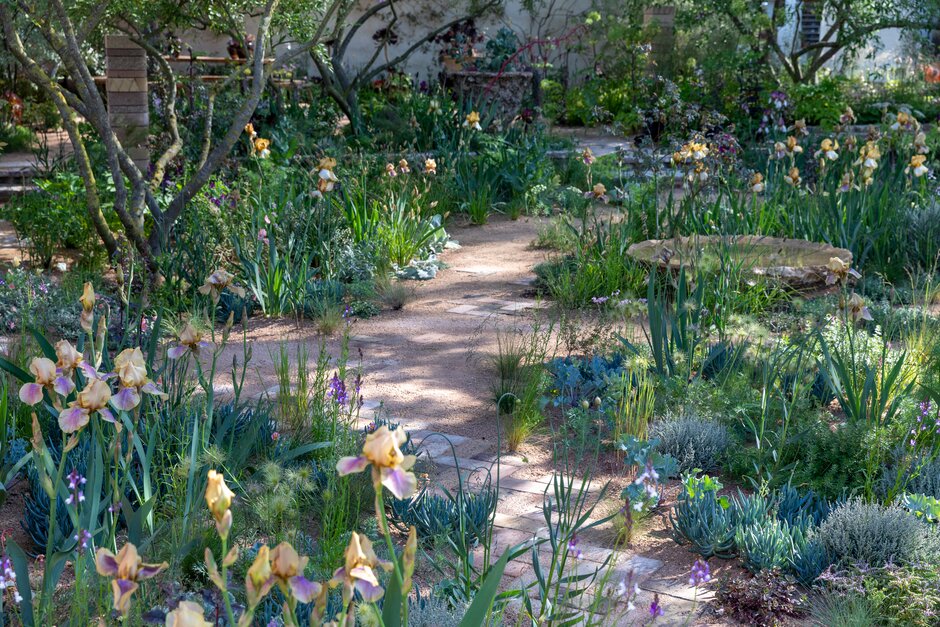
The 2023 shows season is being recognised as the most sustainable ever. This was largely down to the commitment towards ensuring an afterlife for the show gardens – with every one created for this year’s RHS Chelsea, for example, being relocated and rehomed in public, hospital and community spaces around the country. Plastic, pesticides and peat, too, were few and far between. But one of the most apparent and successful steps towards sustainability was in the proliferation of reused, repurposed and recycled materials.
See the top 12 plants of RHS Hampton Court
Nowhere was this more striking than in The Nurture Landscapes Garden, by Sarah Price. Many of us are looking to create climate change-ready spaces, in the form of a dry garden, perhaps; or a low-nutrient environment for growing wildflowers. As such, we often turn to sand and gravel, which in turn must be mined, quarried or dredged, with an associated environmental impact. An alternative, as seen in Sarah Price’s dreamily beautiful Gold medal-winning space, is to use crushed and graded demolition debris as a mulch.
Read top trends and themes of RHS Tatton Park
The construction sector creates an estimated 120 million tonnes of waste each year. Repurposing some of this for use as mulches, planting media and aggregates in our gardens offers an innovative and planet-friendly solution, which maximises surface drainage and promotes resilience by encouraging plants to root deeply. Unfortunately, you aren’t yet able to walk into your local garden centre and pick a bag of crushed site waste off the shelf, but recycled aggregate is increasingly becoming commercially vailable from builders’ merchants and recycling centres.
3. The future of horticulture is safe

Engaging children and young people with gardening is beneficial both for them and for the future of our planet. Children were at the heart of the shows this year, with school pupils taking inspiration from authors such as Tolkein, Frances Hodgson Burnett and the Brothers Grimm as they brought books to life for the School Garden Challenge at RHS Malvern Spring Festival.
Meanwhile, at RHS Flower Show Tatton Park, the annual RHS Young Designer competition provided a platform for three talented under-30s, whose considerate gardens looked at issues such as resilience, grief, courage and sustainability.
4. Don’t make light of nocturnal insects
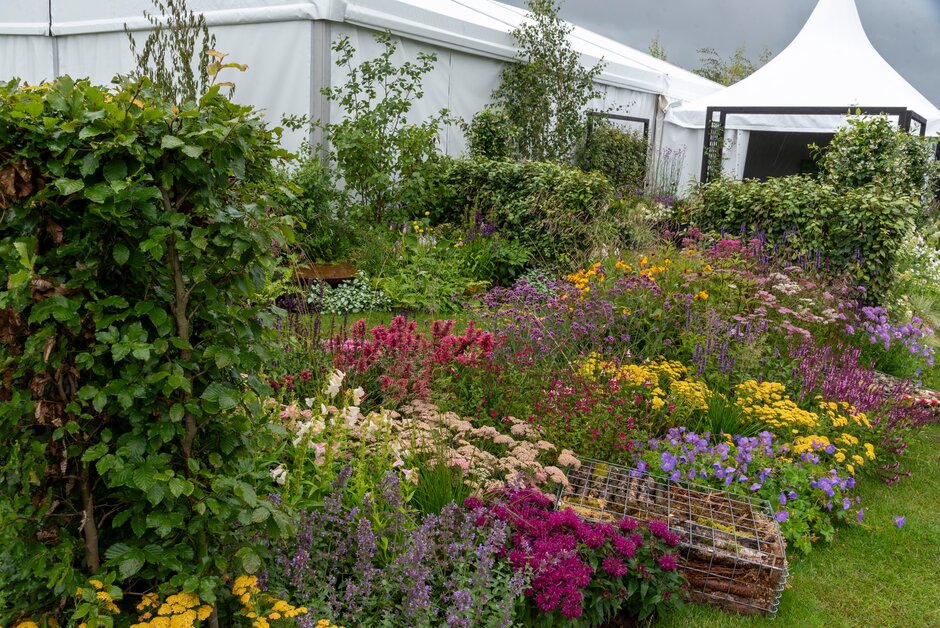
It is common knowledge that habitat loss and pesticides use are among the human-instigated factors responsible for the dangerous decline of the world’s insect species. Less well known, though, is the impact of light pollution on nocturnal insects, such as moths, which have been shown to be more efficient pollinators than their day-active cousins.
Top 10 plants for moths
This issue, and strategies gardeners can adopt to ease the problem, was highlighted in the RHS Nocturnal Pollinator Experience at RHS Flower Show Tatton Park. The inspirational immersive walk-through space, created by garden designer Sharon Hockenhull and digital artist Georgia Tucker, demonstrated how we can light outdoor spaces more sensitively, to leave night-pollinating insects undisturbed in their essential endeavours.
5. Engage all the senses
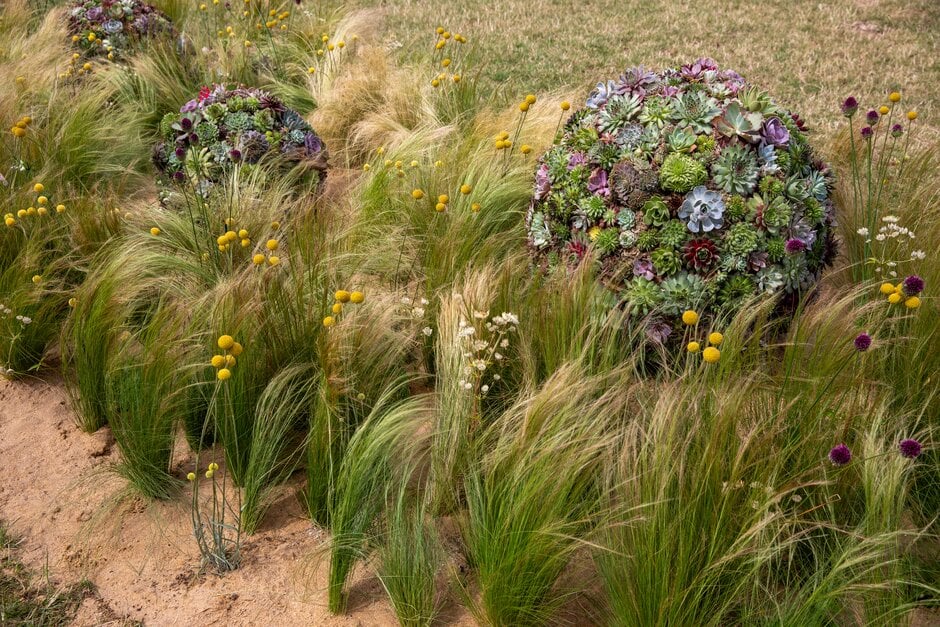
When we talk about garden design and plant selection, more often than not we’re referring to how a space will look. Colour, form, structure, even texture are all usually discussed in terms of their visual impact. Across all four shows this year, however, there was a notable leap in a more multisensory direction, with designers recognising that planting for touch, taste, sound and scent makes a whole lot of sense.
Read more: Top Trends at RHS Hampton Court
The Sensory Pocket Planting category at RHS Hampton Court Palace Garden Festival comprised 10 inspirational spaces, each showcasing how adding sensorial layers to your planting can make for more relaxing, more enjoyable and more inclusive spaces, offering interest to visually impaired and neurodiverse garden visitors as well as children. Feel your stress melt away as you stroke the silky soft, silvery foliage of lamb’s ear (Stachys byzantina); breathe in the intoxicating pineapple-scented perfume of mock orange Philadelphus ‘Lemoinei’, the unbeatable aroma of sweet peas, or your choice from myriad fragrant roses. Many grasses, meanwhile, don’t just provide gorgeous, golden autumn colours, but also soothe the soul with their gentle windswept whispers – Miscanthus sinensis and Sporobolus heterolepis are both worthy inclusions in any sunny border. And for taste, plant edibles to intermingle with your ornamentals. The peppery leaves and flowers of nasturtium (Tropaeolum majus) look great tumbling out of tall pots and taste the part too, while aromatic oregano and self-spreading strawberries provide easy edible groundcover.
6. Savour the plot to plate experience
.jpg)
Outdoor dining took a giant leap forward at RHS Chelsea in Mark Gregory’s The Savills Garden and Filippo Dester’s Hamptons
Mediterranean Garden. These gardens inspired visitors to bring food to the heart of the garden and contained edible plants, kitchens to cook the produce and outdoor dining spaces to enjoy the literal fruits of your gardening labours.
7. Make room for shrooms

The two sisters behind specialist mushroom-growing nursery Caley Brothers have been proving the incredible ornamental and culinary potential of fungi since 2018. But it was at this year’s shows that they really made their mark, thrusting mushrooms into the spotlight in considerable style. Their exhibit at RHS Chelsea was impressive, as was the otherworldly, coral-like collection of fungi that they displayed on Wild City Studios’ Chelsea show garden, Centre for Mental Health’s The Balance Garden, which captured the collective imagination. Homes and gardens the nation over will soon be brimming with shapely shitakes, lush lion’s manes and yummy yellow oysters.
Read how to grow indoor mushrooms
8. Future-proof your garden
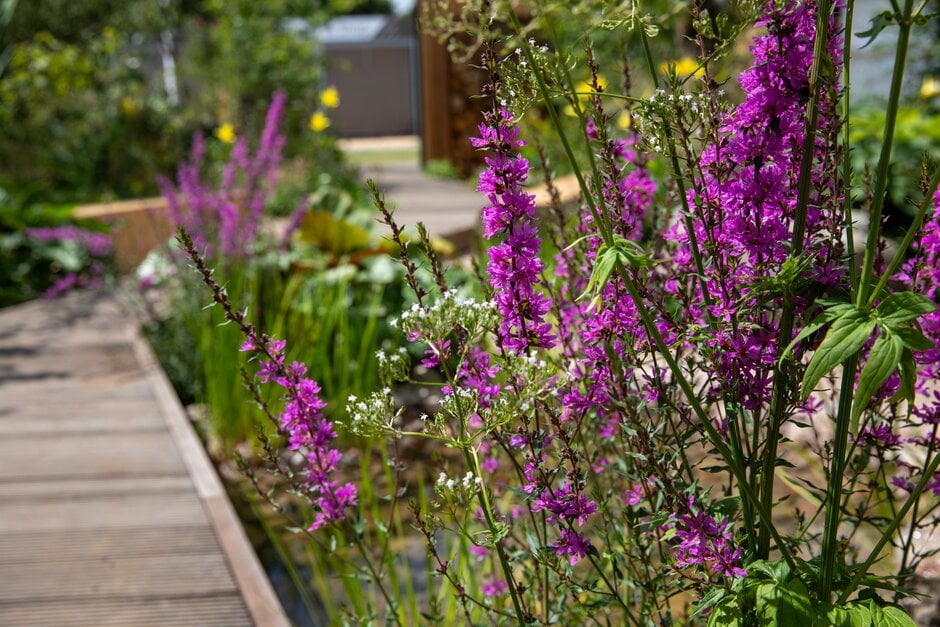
Safeguarding our gardens against the vagaries of a volatile, changing climate can feel like an impossible ask. Hot, dry summers, wet winters and unseasonable and unpredictable weather patterns are becoming more common, and don’t lend themselves to an obvious planting palette. Designers at every show this year attempted to respond to this horticultural conundrum, using lots of plants that display resilience.
Tom Massey’s aptly titled RHS Resilient Garden at Hampton Court was packed with future-proof plants, from ground-covering bugle (Ajuga reptans) to alpine strawberries and the luxuriously floriferous Chinese dogwood (Cornus kousa var. chinensis). According to Tom, resilience, in a garden context, describes a garden’s ability to bounce back from extreme weather events, adapting to, surviving and recovering from whatever the climate throws at it. In the context of climate change, drought-tolerant planting was a clear trend at RHS Chelsea, where cultivars of salvia, bearded iris, fennel and others were pleasingly ubiquitous, while alongside the usual array of breathtaking fountains and multistorey cascades were water features of a more sustainable bent. As hosepipe bans become more common, one way of hardwiring resilience into our outdoor spaces is to collect and harvest rainwater – consider introducing water butts, rainwater-harvesting tanks and swales.
9. British blooms make the cut
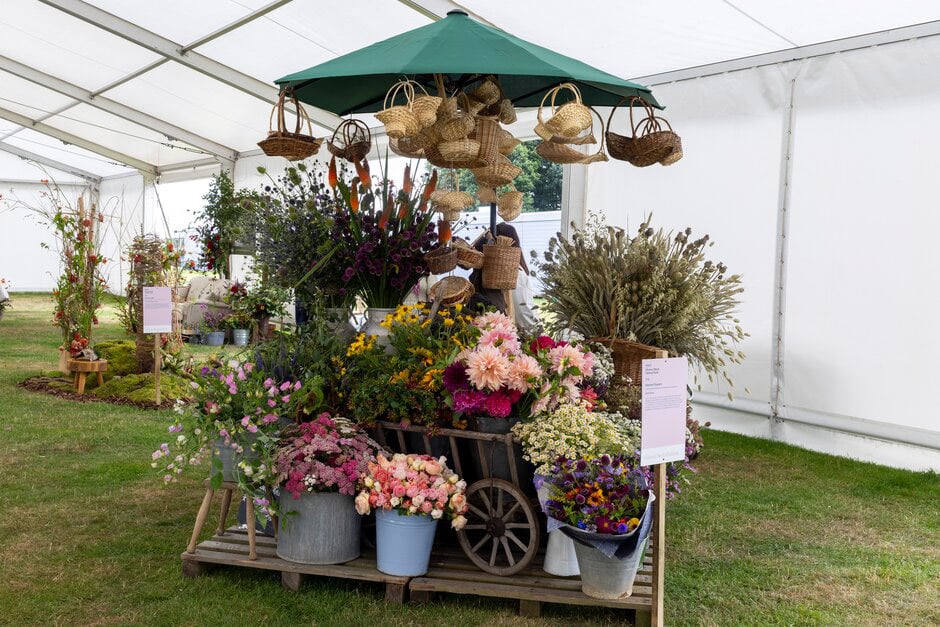
A scandalous 90 per cent of cut flowers currently sold in the UK are imported, often having travelled thousands of miles in refrigerated containers, and racking up an exorbitant carbon footprint in the process. There is, however, a growing trend towards a more sustainable approach. At RHS Hampton Court and RHS Tatton Park, independant British flower farmers showcased seasonal, sustainable stems, changing the face of floristry; and proving that fabulous florals needn’t come at a cost to the planet.
Grow your own cut flowers with Flowers from the Farm
10. Become an ecosystem engineer
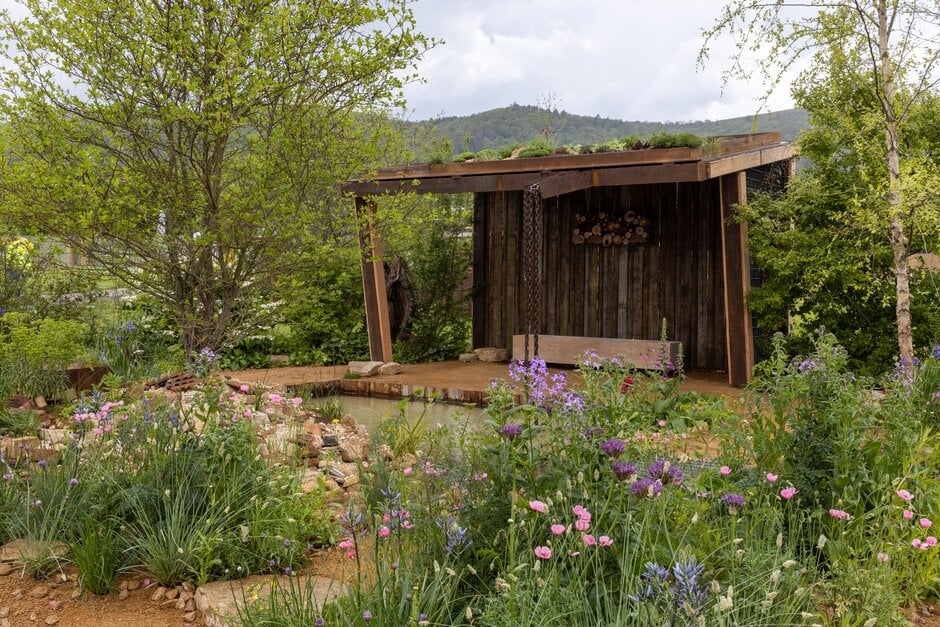
We are in the midst of a biodiversity crisis, with numbers of our native species entering terminal decline at every rung of the food hain. As a result, Britain today, tragically, is among the most nature-depleted countries on the planet. But there is hope. Our gardens make up an area larger than all our nation’s nature reserves combined, which means that, together, we have an opportunity to make a meaningful impact and boost biodiversity. Choosing pollinator-friendly plants and flowers is a great place to start, but only caters for one group of garden visitors. The key to welcoming wildlife – as demonstrated by a number of show garden designers this year – is to include a range of habitats. And surprisingly that’s achievable in even the most modest space.
Look to Jamie Langlands’ The Wildlife Trusts: Wilder Spaces garden at RHS Malvern Spring Festival, where dead wood was not tidied or thrown away, but rather turned into a feature, to provide habitat for insects. At RHS Chelsea, Martyn Wilson’s The RSPCA Garden majored on native trees and shrubs (such as birch, hawthorn and yew), providing sanctuary, sustenance and shelter for hundreds of species of insects, mammals and birds. And no wildlife friendly space could be complete without water. A water feature of almost any kind is of significant value to wildlife, but a pond in particular – such as the one on Lucy Taylor’s The Traditional Townhouse Garden at RHS Hampton Court – is guaranteed to introduce an entire ecosystem into your back garden.
Dan Masoliver is Editor of the RHS Show Guides and author of e-newsletter The Earthworm.
You may also be interested in...

